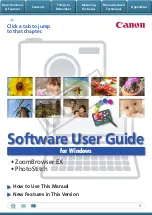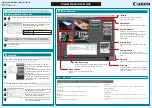
206
EPICenter Software Installation and User Guide
The Grouping Manager
You can define groups and add resources to them to create an organizational structure that facilitates
managing your network. The EPICenter software provides several predefined groups:
•
Custom Applications
•
Device Groups
•
Hosts
•
Import Sources
•
Port Groups
•
Users
You can define your own groups at the same hierarchical level as the predefined groups, or as
subordinate groups (children) of an existing group. You can assign resources to your own user-defined
groups and to the predefined groups, with the exception of Device Groups and Import Sources.
The Device group always has the child group named “Default”. It may or may not have additional
members depending on whether devices have been added to the device groups in Inventory. You
cannot directly add members to Device Groups using the Grouping Manager. This must be done in
Inventory.
Four of the predefined groups—Custom Applications, Hosts, Port Groups, and Users—initially have no
members. Although the latter three groups are provided to help you organize your host, user, and port
resources, they can contain children of any resource type. A Custom Applications group can only
contain port resources. You can create new groups as members of these groups, or add resources of any
type directly to them. The Custom Applications group cannot have hierarchical children.
•
Custom Applications may be used to group various L4 resources without requiring ports in the
group to be contiguous or of uniform type. For instance, you can mix UDP and TCP ports in one
group. You can also have sets of contiguous and single ports in the same group.
•
Port Groups may be used by the Real Time Statistics applet and the IP/MAC Address Finder applet.
However, these applets do not support hierarchical groups—if you have subordinate groups within a
port group, the subordinate layers are all collapsed into a single layer. Resources of types other than
ports are ignored by these applets.
Port Groups, along with all the other types of groups and resources, may also be used by the
optional Policy Manager module.
•
The Hosts and Users groups (either the predefined groups or subordinate groups) may be used by
the optional Policy Manager. This is also true of all user-defined groups. No other EPICenter applets
currently support groups of these types.
In a group that contains resources of different types, the Policy Manager will ignore those resources
that are not relevant to the purpose for which the group has been selected.
The other two predefined groups, the Device Groups group and the Import Sources group, are
restricted in the way they can be used.
Device Groups.
The “Device Groups” group contains the device groups and devices known to the
EPICenter inventory database. Device groups are created within the EPICenter Inventory Manager
applet, and devices are added or discovered, and are assigned to device groups, within that applet. All
port resources are also defined in association with the devices known to the Inventory Manager.
•
You cannot add resources to or remove resources from the Device Groups group through the
Grouping Manager.
Summary of Contents for EPICenter 4.1
Page 20: ...20 EPICenter Software Installation and User Guide Preface ...
Page 46: ...46 EPICenter Software Installation and User Guide EPICenter and Policy Manager Overview ...
Page 190: ...190 EPICenter Software Installation and User Guide Configuration Manager ...
Page 204: ...204 EPICenter Software Installation and User Guide Using the Interactive Telnet Application ...
Page 242: ...242 EPICenter Software Installation and User Guide Using the IP MAC Address Finder ...
Page 266: ...266 EPICenter Software Installation and User Guide Using ExtremeView ...
Page 284: ...284 EPICenter Software Installation and User Guide Real Time Statistics ...
Page 436: ...436 EPICenter Software Installation and User Guide Using the Policy Manager ...
Page 454: ...454 EPICenter Software Installation and User Guide The ACL Viewer ...
Page 468: ...468 EPICenter Software Installation and User Guide Troubleshooting ...
Page 504: ...504 EPICenter Software Installation and User Guide EPICenter External Access Protocol ...
Page 510: ...510 EPICenter Software Installation and User Guide EPICenter Database Views ...
Page 522: ...522 EPICenter Software Installation and User Guide EPICenter Backup ...
Page 526: ...526 EPICenter Software Installation and User Guide Dynamic Link Context System DLCS ...
Page 546: ......
















































